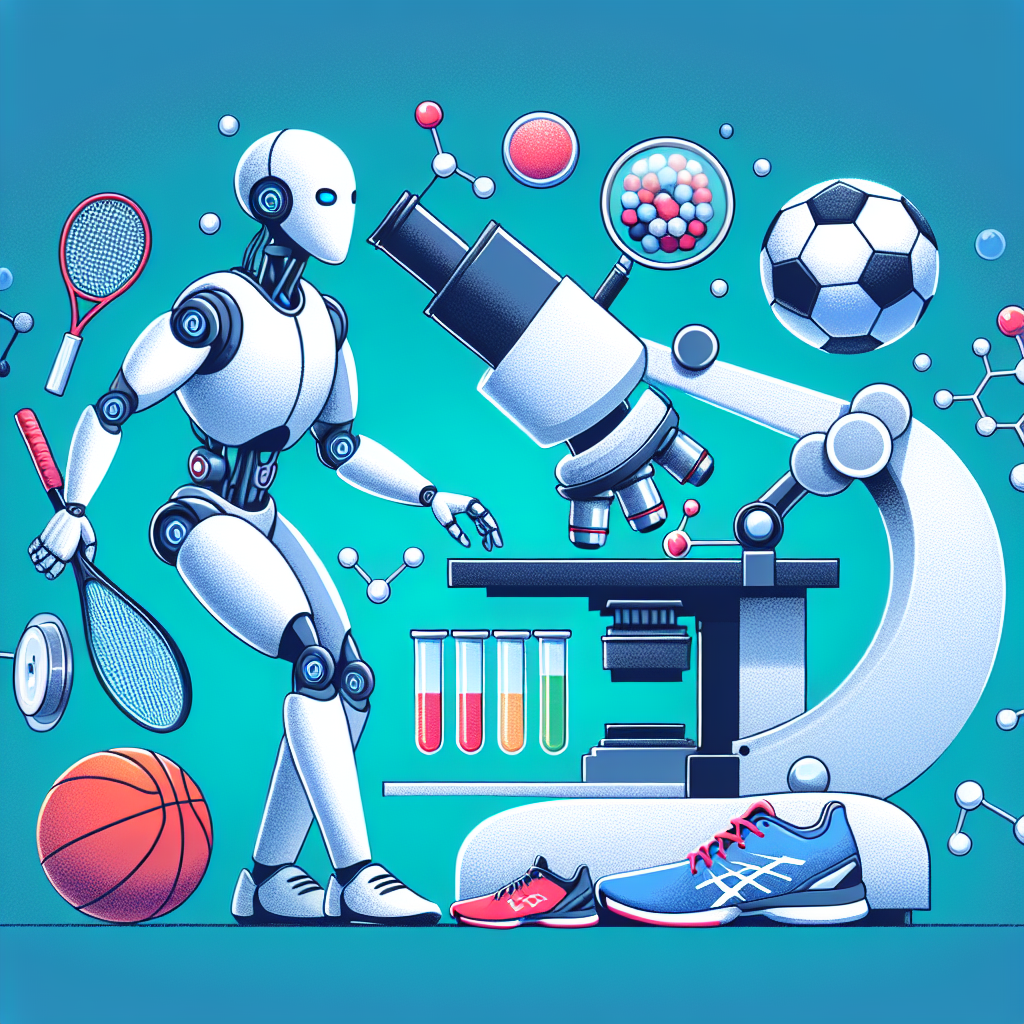AI and the Detection of Sports Performance Doping
In the world of professional sports, the use of performance-enhancing drugs has been a persistent problem for many years. Athletes looking to gain an edge over their competitors often turn to doping in order to improve their strength, speed, and endurance. However, doping is not only unethical, but it can also have serious health consequences for athletes.
To combat the use of performance-enhancing drugs in sports, organizations like the World Anti-Doping Agency (WADA) have developed strict testing protocols to detect banned substances in athletes’ bodies. These tests are crucial in maintaining the integrity of sports competitions and ensuring a level playing field for all athletes.
In recent years, artificial intelligence (AI) has emerged as a powerful tool in the fight against doping in sports. AI technologies, such as machine learning algorithms, have the ability to analyze vast amounts of data and identify patterns that may indicate the use of performance-enhancing drugs. By leveraging AI, anti-doping agencies and sports organizations can improve their testing methods and catch athletes who are cheating.
One of the key advantages of using AI in the detection of sports performance doping is its ability to process large volumes of data quickly and accurately. Traditional doping tests rely on detecting specific substances in athletes’ urine or blood samples, but these tests can be limited in their ability to detect new or unknown substances. AI, on the other hand, can analyze a wide range of data sources, including athletes’ training schedules, performance metrics, and even social media posts, to identify patterns that may suggest doping.
For example, AI algorithms can analyze an athlete’s performance data over time and detect sudden improvements in strength or speed that may be indicative of doping. By comparing an athlete’s performance to that of their peers, AI can also identify outliers who may be using performance-enhancing drugs. This type of analysis can help anti-doping agencies target their testing efforts more effectively and catch cheaters before they have a chance to compete unfairly.
In addition to analyzing performance data, AI can also be used to monitor athletes’ behavior and detect signs of doping. For example, AI-powered surveillance systems can track athletes’ movements and interactions to identify suspicious behavior, such as meeting with known doping suppliers or using banned substances. By monitoring athletes both on and off the field, AI can provide a more comprehensive picture of their activities and help anti-doping agencies intervene before doping becomes widespread.
Another key advantage of using AI in the detection of sports performance doping is its ability to adapt and evolve over time. As new doping techniques and substances emerge, AI algorithms can be updated to detect these new threats and keep pace with cheaters. This flexibility is crucial in the fast-paced world of professional sports, where athletes are constantly looking for ways to gain an edge over their competitors.
While AI has shown great promise in the fight against doping in sports, there are still some challenges that need to be overcome. One of the main challenges is ensuring the accuracy and reliability of AI algorithms in detecting doping. AI systems are only as good as the data they are trained on, so it is important to ensure that the data used to train these algorithms is comprehensive and representative of the diverse range of athletes and sports.
Another challenge is the ethical implications of using AI in the detection of doping. Some critics argue that the use of AI surveillance systems to monitor athletes’ behavior may infringe on their privacy rights and lead to unwarranted scrutiny. It is important for sports organizations and anti-doping agencies to carefully consider the ethical implications of using AI in the fight against doping and ensure that athletes’ rights are respected.
Overall, AI has the potential to revolutionize the detection of sports performance doping and help level the playing field for all athletes. By leveraging the power of AI technologies, anti-doping agencies can improve their testing methods, target their efforts more effectively, and stay ahead of cheaters. While there are still challenges to overcome, the future looks bright for the use of AI in the fight against doping in sports.
FAQs:
Q: How does AI detect doping in athletes?
A: AI can analyze a wide range of data sources, including athletes’ performance metrics, training schedules, and behavior, to identify patterns that may suggest doping. By comparing an athlete’s performance to that of their peers and monitoring their activities both on and off the field, AI can provide a more comprehensive picture of their behavior and help anti-doping agencies target their testing efforts more effectively.
Q: What are the advantages of using AI in the detection of sports performance doping?
A: AI can process large volumes of data quickly and accurately, detect new or unknown substances, adapt and evolve over time, and provide a more comprehensive picture of athletes’ behavior. These advantages make AI a powerful tool in the fight against doping in sports.
Q: What are the challenges of using AI in the detection of sports performance doping?
A: Some of the main challenges include ensuring the accuracy and reliability of AI algorithms, addressing the ethical implications of using AI surveillance systems, and overcoming concerns about data privacy and athlete rights. It is important for sports organizations and anti-doping agencies to carefully consider these challenges and work towards solutions that respect athletes’ rights while still effectively detecting doping.
Q: What is the future of AI in the detection of sports performance doping?
A: The future looks bright for the use of AI in the fight against doping in sports. As AI technologies continue to evolve and improve, anti-doping agencies will be able to stay ahead of cheaters and ensure a level playing field for all athletes. By leveraging the power of AI, sports organizations can improve their testing methods, target their efforts more effectively, and ultimately protect the integrity of sports competitions.

